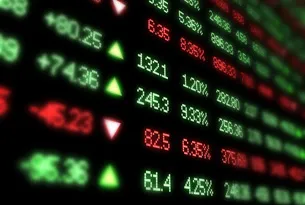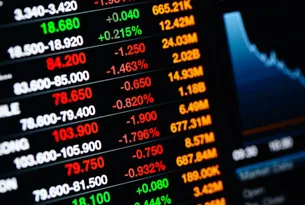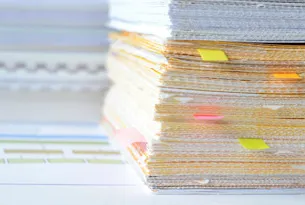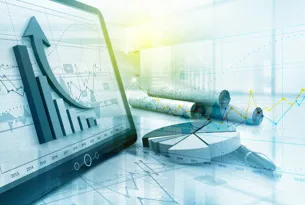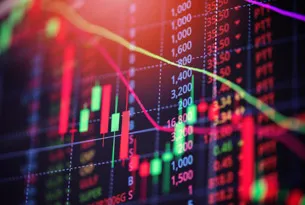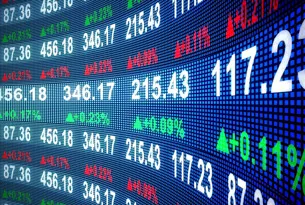AdvisorShares sponsors a number of actively managed ETFs. Today, company CEO Noah Hamman discusses several of these, including a soon-to-launch fund that gives a portion of its management fees to the Global Echo sustainability foundation.
Kate Stalter: I am speaking with Noah Hamman, CEO of AdvisorShares. Noah, you have a number of actively managed ETFs that I’m interested to hear about today.
I wanted to ask you, though: One of the reasons that people have historically liked indexed ETF is because of lower costs. What would you say to investors to persuade them of the advantages of actively managed ETFs?
Noah Hamman: I would say that as actively managed exchange traded funds grow, they’re going to be, from a management fee perspective, very competitive with other actively mutual funds.
But they will also bring the other benefit that they’re used to with ETFs, which is the transparency. And probably more importantly much better tax efficiency, which helps the bottom line.
Kate Stalter: You have a number of these ETFs, and I understand that you’re even about to launch a new one?
Noah Hamman: That’s correct. We have 13 actively managed exchange traded funds in the marketplace. All of them are managed by different underlying sub-advisors, so they are experts in their category.
For example, Peritus High Yield ETF (HYLD) is our high-yield ETF managed by Peritus Asset Management. Then yes, as you mentioned, we have a very interesting ETF on its way out on May 24. It’s the Global Echo ETF (GIVE), and it’s a sustainable investment strategy.
We’re working with four other managers who are all experts in the sustainability investment space. We have two equity managers, a bond manager, and then an alternative manager, a manager that’s trying to hedge out market risk with their sustainable exposure. All of that is within the GIVE ETF, so you’re getting a very diversified investment strategy with multiple managers, so it makes it a good core holding for a long-term investment.
- Also read: 3 ETFs to Profit on Seasonal Changes
But probably the other most interesting thing about the strategy is that we’re taking a portion of the management fees, and we are giving them to a foundation being set up by Philippe Cousteau, Jr. He is setting up a foundation called the Global Echo Foundation, and that foundation is going to focus in on making charitable and impact-investment contributions in the area of earth, water, and women, so things that focus in that area they’re going to make investments in to try and improve those areas.
Kate Stalter: That does sound interesting. Let me ask you about another one that somebody I interviewed recently for this same feature mentioned as one he recommends, which is Active Bear ETF (HDGE). Can you talk about that one, Noah?
Noah Hamman: Absolutely. It’s an ETF that has a portfolio manager that shorts stocks, so instead of buying them long, he is shorting securities. So most often, people are using it to hedge their market exposure.
Usually, a portfolio, of course, is invested all long, and with the volatility that we see in the marketplace, having something that can try and make money when the markets are down or when the stocks are weak, this is that type of portfolio.
And it’s a very interesting strategy in that there’s two portfolio managers. One, his name is John Del Vecchio, and his background training is more as a forensic accountant, so he’s really looking at the books of companies and looking at how they track their sales and how they track their revenues, and whether or not they’re changing accounting procedures, or whether or not there’s changes that have been going on with their CFO, where they are quitting abruptly or things like that.
That for him, are signs that not that they were a bad company, but that the company will have some financial weakness that would cause their share price to go down. But he’s paired up with another portfolio manager who looks at the overall trends in the marketplace, more from a technical perspective.
So if the market’s moving up, they may not always be fully short. But if the market is favorable and they’ve got a nice list of securities that meet their criteria, they’ll be shorting those individual securities.
So there are no derivatives. It’s transparent every day, and it’s unlike some of those inverse ETFs. This is a product that even when the market’s up, our fund can still be up if we are shorting the right securities that happen to be down that day. So it really does work like a true shorting strategy, which historically hasn’t been, at least in the ETF space, available to investors.
- Also read: 7 New Market Neutral ETFs
Kate Stalter: You did mention a comparison to some of the inverse ETFs. Is this the kind of vehicle that people would want to enter into in a longer-term trade, or more of a quicker trade that would depend on market conditions?
Noah Hamman: That’s a very good question. I think in general with shorting, it’s definitely a shorter-term position. But I would describe differences between what you see in the inverse index ETFs, where they’re shorting everything. They’re shorting bad stocks along with good stocks, and they have these daily rebalancing features.
My understanding of those is, they’re very much designed for one day or two days or three days. They’re a very, very short-term holding. Whereas a product like ours, where we’re shorting individual securities that may demonstrate weakness over a period of time where markets cycle, you can use them what I would describe as maybe more cyclically, when it’s more volatile in the marketplace.
I know that the VIX says a lot of things. That’s an indicator that a lot of people are looking at lately, and when the VIX is high, there is a lot of volatility in the market. That might be a time when you want to maintain more of a hedge. Our product should be held, I think, for that longer cycle. But in general, we’re all expecting the market to go up over time, and we want to be probably biased long for the long term.
Kate Stalter: I want to just let you talk about some of the other strategies. You’ve got some interesting ones in here. You’ve got one that I see is actually an ETF of ETFs. I also see that you’ve got one that uses the Harry Dent strategy, and Harry is somebody who’s well known to our listeners. Can you say a little bit more about some of the other ETFs today, Noah?
Noah Hamman: Absolutely. The three in particular, including the Dent Strategy, are tactical strategies. I’ll point out the one that we’ve just most recently launched, it’s coming up on being a year old, but it’s the Meidell Tactical Advantage ETF (MATH). Interestingly enough, the portfolio manager takes a very mathematical approach to looking at the changes in the marketplace.
And when we’re speaking of HDGE, and people sort of understanding how long they should hold it or not hold it, MATH and our other tactical strategies are all ETFs that are designed to react to the changes of the market. Often investors really don’t know how they want to adjust their portfolio when the risk is high, when the risk is low. So MATH.
Global Tactical Asset Allocation Strategy (GTAA) is another one of ours. And then Dent Tactical ETF (DENT), as you mentioned, are three tactical ETFs where the manager is making that decision for you, either being fully invested or hedging themselves by going to cash, and maybe stepping aside from the marketplace.
HYLD, I mentioned earlier, is a product that we’ve seen a lot of interest in because, of course, people have been searching for yield in the marketplace. Because ours is actively managed, the managers selecting a better group of bonds that they are confident in those companies—while high yield and it’s riskier credit quality—feel confident that the companies can make those payments. So we’ve got a product that produces higher distribution rates than indexed-based high yields.
But our last one I should definitely point out, because I know investors are increasing their exposure to international markets in particular. That’s our Focused Growth International (AADR). That management team is WCM Investments out of Laguna Beach, California, and it’s done an amazing job with this strategy.
It’s coming up on its two-year track record, and over that period of time, iShares MSCI EAFE Index Fund (EFA), which is an index-based ETF most people use to get their international exposure, I think is up maybe 6% over that time. But AADR is up over 12% during that time.
It’s similar. It’s long only. It’s individual securities, but it has seen better stock selection by that portfolio management team.
- Also read: 7 New ETFs for International Exposure




















